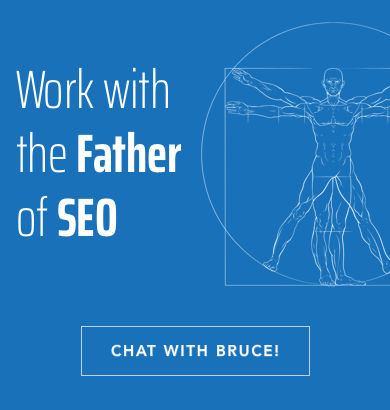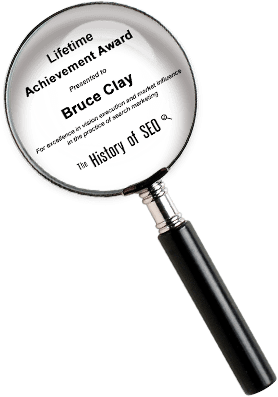How SEO Drives Business Growth Across the Automotive Industry

These days, most people start their car search online. Whether they’re trying to find a dealership nearby, price out a set of new tires, or track down a rare part, they’re turning to Google before anything else. So, if your business isn’t showing up, you’re likely missing out on customers.
That’s where SEO really makes a difference. It helps your shop or dealership get seen by the right people at the exact moment they’re looking. Whether it’s improving your rankings in local search or getting more clicks on key service pages, smart SEO brings more eyes—and more buyers—to your business.
Why SEO Matters in the Automotive Industry
SEO isn’t just about ranking higher on Google. It’s about being there when people are actively looking for what you offer. And in the auto world, that’s everything. When someone needs a reliable used car, a quick tire replacement, or a shop to check out their engine light, they’re probably searching online first.
More often than not, they’re doing it from their phone. Maybe they’re in a parking lot or at work, asking Siri where to get an oil change or searching for “best tire shop near me.” That’s why local SEO is such a big deal. If your site loads fast, clearly lists your services and location, and answers the questions people are actually asking—you’re already ahead of the competition.
And let’s be real—people trust what shows up at the top. If your business is right there with solid reviews and useful info, they’re more likely to choose you over the next option. Done right, SEO doesn’t just get you seen—it earns trust and brings in customers who are ready to act.
Common SEO Tasks
In the automotive world, SEO starts with knowing what your customers are actually searching for. Not guesses—real phrases like “brake repair near me” or “Jeep dealer in [City].”
Once you know that, you’ve got to make sure your website can actually show up for those terms. That means tightening up the basics—clear page titles, helpful headings, internal links that make sense, and a site that works well on mobile. If your site loads slowly or has broken pages, people won’t stick around—and Google notices that.
Local SEO matters a lot here too. Your Google Business Profile needs to be accurate, your name and phone number should match everywhere it shows up, and good reviews help a ton. It’s not just about rankings—it’s about building trust.
And content? That’s where you show what you know. Answer common questions, explain your services clearly, and post helpful info your customers actually want. It doesn’t need to be fancy—it just needs to be useful. Do that consistently, and over time, your site becomes something people (and search engines) rely on.
What I Think
Too many automotive businesses think SEO is something you do once — like adding keywords to your homepage. In my experience, SEO is a living, evolving system that demands ongoing effort and attention. If you’re not updating your dealership inventory with optimized listings, or if you don’t have service-specific landing pages, you’re leaving traffic (and money) on the table. I’ve seen small tire shops outperform national chains because they mastered local SEO and targeted content.
The difference comes down to strategy and execution. The more specific and helpful your pages are, the better they’ll perform. Google wants to serve users the best answers, and that’s your opportunity to shine. The automotive space is highly competitive, but it’s also full of opportunities.
Businesses that invest in SEO today set themselves up for long-term success tomorrow. And it’s not just about ranking—it’s about owning your space in your local market and being seen as the go-to provider. With a proper plan and consistent action, any automotive company can earn that visibility. SEO isn’t optional anymore; it’s foundational.
Primary SEO Tasks
Keyword Strategy
This is the foundation. It involves researching the most relevant and high-converting search queries your potential customers are using. For example, “Ford oil change service in Austin” is a more targeted keyword than just “oil change.” Keyword strategy also includes grouping terms by intent and building silo pages around them.
When done right, this informs your entire website structure. Businesses that skip this step often find themselves struggling with traffic that doesn’t convert. The precision of this work ensures you’re found for what people are truly looking for. It also supports better internal linking and structure.
On-Page Optimization
This is about making sure each page on your site actually says what it needs to—for both search engines and real people. That means having clear titles, writing descriptions that make someone want to click, and naturally using the kinds of words people are typing into Google. It also helps to link between related pages so visitors (and search engines) can find their way around easily. It’s not about stuffing in keywords—it’s about making your content clear and useful.
Technical SEO
This is the stuff most folks don’t see, but it matters more than you’d think. If your site takes forever to load or doesn’t work right on someone’s phone, people are going to leave—fast.
Content Marketing
You don’t need a blog full of fluff. What you do need is content that answers real questions your customers are asking. That might be a service page, a quick guide on brake issues, or even a simple FAQ. Good content shows people you know your stuff, and it gives search engines more reasons to show your site in results. When the content’s fresh, helpful, and easy to read, people stick around—and Google notices.
Local SEO Optimization
Local search drives high-intent traffic, and for automotive services, it’s non-negotiable. Optimizing your Google Business Profile, creating location pages, and embedding maps help you show up in the map pack and local results. Reviews and citations add credibility and improve ranking. Local SEO efforts are what drive phone calls and foot traffic.
Internal Linking
Linking between your service pages, blog posts, and location pages helps users navigate and helps Google understand site structure. For example, your “Oil Change” page should link to “Engine Maintenance” and “Tire Rotation” pages. This keeps users engaged and reduces bounce rate. It also spreads authority throughout your site.
Mobile Optimization
Most users search from mobile devices. If your site is clunky on mobile, you’ll lose visitors. Fast-loading, mobile-first designs that support booking or calls are essential. Mobile optimization improves rankings and conversions.
Review Management
SEO is as much about reputation as it is about content. Encouraging and managing reviews on Google and other platforms enhances visibility and builds trust. Responding to reviews also shows engagement and improves user experience. Positive reviews can influence both your ranking and user decisions.
Analytics & Reporting
Knowing what works lets you scale your efforts. Setting up Google Analytics and Search Console correctly helps you measure traffic, conversions, bounce rates, and identify what’s performing well. It also informs content planning and SEO strategy going forward. Data helps remove guesswork.
Secondary SEO Actions
Schema Markup
Using structured data like LocalBusiness schema, Product schema, or Review schema helps Google understand your content better. It also helps display rich snippets in search results, increasing click-through rates. This is particularly useful for auto listings, service types, and customer feedback. It gives your listings more visual appeal in search.
Image Optimization
Large or uncompressed images slow down your site. Use appropriate filenames, alt text, and file sizes. For auto-related sites, images are key—whether it’s product photos or before/after service pictures. Proper image optimization supports both speed and discoverability.
Competitor Analysis
Study what your competitors rank for. Identify their backlinks, content strategies, and service keywords. Then, build a better version. SEO is part strategy, part competition.
Location Page Strategy
Each location should have its own optimized page. This allows businesses with multiple locations to rank individually for different cities or regions. Pages should include local content and embedded maps. Tailoring content per location increases visibility.
Seasonal Campaign SEO
Whether it’s winter tires or spring-cleaning detailing, capitalize on seasonality by creating timely content and landing pages that rank when demand peaks. SEO supports fast pivots based on customer needs. This approach helps match current search trends. It also allows you to capture seasonal high-intent traffic.
FAQ and Voice Search Optimization
Answering common questions in clear, concise language improves rankings and helps capture voice search traffic. For example, “What’s the best oil for high-mileage cars?” is a common query. FAQ content can also earn you featured snippets. This content is perfect for mobile searchers.
Social Proof Integration
Display customer testimonials and case studies prominently on your service pages. Social proof increases conversion and enhances perceived expertise. It also adds fresh, user-generated content to your site. This boosts your credibility and SEO performance.
Landing Page A/B Testing
SEO brings traffic, but testing page layouts, CTAs, and messaging ensures you’re converting that traffic. Continuously optimize for performance. Every part of a page can be tested to improve user flow. Even small improvements lead to higher ROI.
Brand Mentions and PR SEO
Being featured in local news or auto blogs creates high-value backlinks and increases authority. These efforts complement traditional SEO and build long-term brand trust. Mention monitoring also uncovers link opportunities. PR and SEO work better together.
How SEO Benefits Each Role
Car Dealerships (New and Used)
A dealership’s inventory pages are gold mines for organic search. SEO helps rank for specific models, trims, and used cars in target markets. Local SEO ensures the dealership shows up in map results, while schema makes listings stand out in search. Proper tagging and linking between inventory and financing options keep users engaged and more likely to convert.
For promotions and trade-ins, SEO ensures your offers reach the right buyers at the right time. Strong reviews and location-specific content build trust with new leads. Optimizing service department pages adds another source of traffic. Voice search optimization catches buyers saying things like “used trucks near me.”
Auto Repair Shops
Auto repair businesses often compete locally. Optimizing service pages for things like “brake repair” or “engine diagnostics” in your city pulls in high-intent leads. Reviews and GMB optimization help build reputation. Technical SEO ensures these service pages are fast and mobile-optimized.
Content like FAQs and service guides support user intent. Internal linking to related services increases time on site. Schema enhances your result presence. SEO also helps capture repeat business and referrals.
Auto Body and Collision Repair
People need these services fast after accidents. Ranking for “collision repair near me” requires local SEO, strong CTAs, and review credibility. Visual content with before-and-after images builds trust. Schema markup for services and insurance details boosts click-through.
Blogs explaining the insurance claim process provide helpful content and increase authority. Optimize for urgency and location-based searches. Fast loading mobile pages improve bookings. SEO is crucial for being found when it matters most.
Oil Change and Quick Lube Services
These services are frequent and impulse-driven. Local SEO helps capture searches like “oil change near me.” Schema for services and prices enhances visibility. Including booking features improves conversions.
Quick tip blogs and maintenance checklists attract return visitors. Use voice-friendly content to catch users saying “oil change now near me.” Optimize hours and location data for mobile search. Repetition and reminders help build customer loyalty.
Car Wash and Detailing Services
Visual appeal is key here. Optimize image content, embed videos, and show before/after galleries. Local SEO and customer reviews are crucial for map visibility. Create blog content around seasonal services or paint protection.
Ensure a seamless booking experience. Use location-specific keywords like “mobile detailing in Austin.” Testimonial videos and review snippets enhance trust. Detailing businesses thrive on local search exposure.
Auto Parts Retailers
Product SEO is critical—this means schema, product specs, internal linking, and good categorization. Content that helps users choose parts or learn installation boosts authority. Optimize for part numbers and compatible models. Create service-specific landing pages tied to each part category.
Local content helps for in-store pickup users. Reviews and UGC strengthen your product pages. SEO also supports ecommerce scalability. Visibility drives part sales daily.
Motorcycle Dealerships
SEO helps riders find bikes by type, make, or condition. Content for gear, accessories, and maintenance builds brand authority. Reviews and testimonials help in a trust-driven segment. Schema for inventory and events (like test rides) helps visibility.
Geo-target keywords by riding season or terrain. Local landing pages attract test ride bookings. Image-rich listings increase engagement. Riders search online first—your site should lead.
Classic and Exotic Car Sales
Selling high-value vehicles like vintage Mustangs or Ferraris requires high-trust, high-intent SEO. Target long-tail searches like “1967 Shelby GT500 for sale near me” or “low-mileage Lamborghini Miami” to attract serious buyers. Quality matters—high-resolution photos, detailed listings, and review schema all boost credibility and clicks.
Because purchases are often destination-based, optimize for location-specific terms and build pages around regions known for collectors or auctions. Evergreen content like “How to store a classic car” or “What to look for in an investment-grade vehicle” brings in organic traffic year-round. In this niche, one lead can be worth six figures—so ranking well really pays off.
Conclusion
If you’re serious about growing your automotive business online, investing in SEO is the smartest move you can make. From showing up first in local searches to converting more leads, SEO supports every part of the customer journey. Don’t let your competitors drive away with your potential customers. Contact Bruce Clay, Inc. today and let our SEO experts craft a strategy that delivers lasting results for your business.










